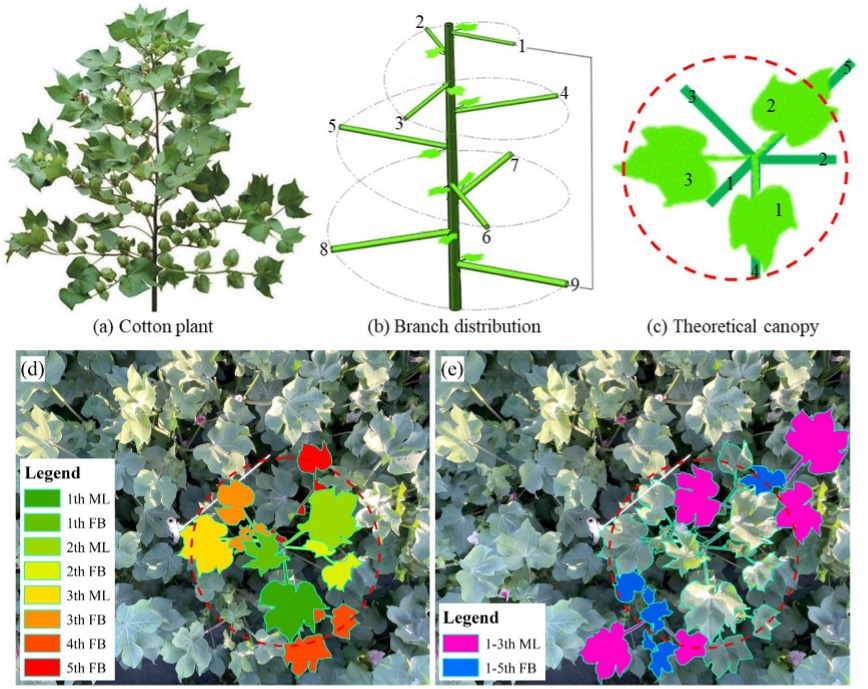
Scientists from the Aerospace Information Research Institute (AIR) of the Chinese Academy of Sciences, in collaboration with Shihezi University, have developed a new method for grading cotton Verticillium wilt (VW). This method correlates with yield loss and is suitable for remote sensing monitoring to assess the severity of VW. Their findings were recently published in Agricultural and Forest Meteorology.
Accurately assessing cotton VW severity is crucial for managing outbreaks and estimating yield loss. China's national grading standard (GB/T 22101.5—2009) classifies VW based on the percentage of diseased leaves, but this approach faces challenges in fieldwork and remote sensing.
The current standard reflects symptomatic leaves but fails to quantify actual yield loss, complicating production assessments. Additionally, manually counting leaves is labor-intensive, and the bottom-up progression of VW symptoms misaligns with the top-down view used in remote sensing, further reducing monitoring accuracy.
To address these issues, the research team conducted a detailed analysis of the disease progression in cotton plants. They discovered that the fruit branch leaf (FL) exhibited a stronger correlation with cotton yield than those on the main stem leaf (ML). The disease status of MLs in the top three layers (L1-L3) and FLs in the top five layers (L1-L5) effectively indicated yield loss.
Building on these insights, the researchers developed the Eight-Position Grading (EPG) method. Based on the GB grading principle and the natural spiral arrangement of cotton branches (known as the "3/8" distribution), the EPG method focuses only on the most critical layers—L1–L3 for MLs and L1–L5 for FLs—streamlining disease assessment while maintaining high accuracy.
Compared to traditional field surveys, the EPG method simplifies data collection by assessing only a specific subset of leaves in the top canopy. This not only reduces manual labor but also enables large-scale, efficient monitoring. The EPG method shows a stronger correlation with yield loss, capturing yield reduction with a 12% gradient, whereas the GB method demonstrates a weaker connection with actual outcomes.
Furthermore, theoretical simulations and UAV-based experiments have confirmed that EPG is better suited for large-scale remote sensing applications. EPG achieved significantly higher estimation accuracy for VW severity (R² = 0.76) compared to the GB method.
By aligning disease severity grading with remote sensing capabilities, the EPG method offers a practical and scientific approach to disease assessment. It provides an efficient tool for monitoring cotton VW severity and enables a more accurate estimation of yield loss across large agricultural areas.

The spatial morphology of cotton plant and the target leaf distribution involved in EPG: (a) cotton plant; (b)branch distribution; (c) theoretical canopy; (d) MLs in L1-L3 and the FLs in L1-L5 of a single cotton plant; (e) MLs in L1-L3 and the FLs in L1-L5 of the cotton plants that intersect with the canopy of (d). (Image by AIR)

86-10-68597521 (day)
86-10-68597289 (night)

52 Sanlihe Rd., Xicheng District,
Beijing, China (100864)

